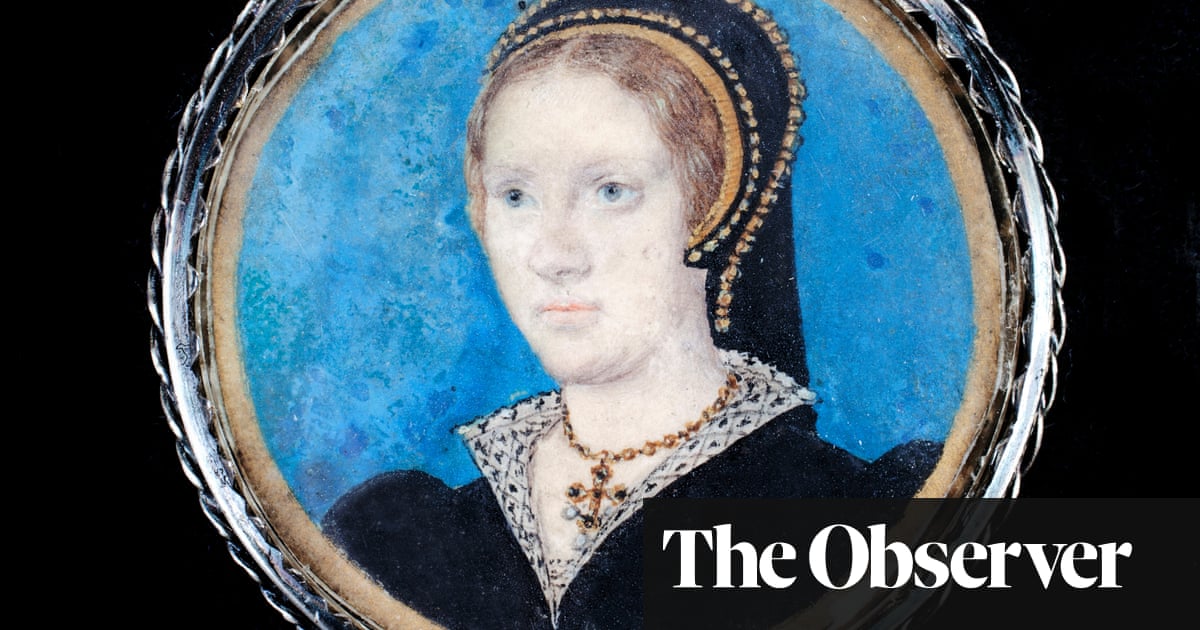It’s Mary Tudor – by a nose. Not in a horse race, but from a comparison of portraits of Mary, Henry VIII’s elder daughter who became the first crowned queen of England, and Katherine Parr, his sixth wife.
For decades, experts, including the noted historian and museum director Sir Roy Strong, have thought that a near 500-year-old miniature was of Parr. Now several leading Tudor authorities are convinced it is Mary, often dubbed “Bloody Mary” because as an ardent Catholic queen she ordered the killing of many Protestants.
Just look at the noses of the two women, argues the art historian Emma Rutherford. “Mary’s, frankly, was rather bulbous and upturned, while Parr’s was more aquiline.”
Rutherford’s conclusion, backed by vital new evidence about dress and jewelry items, is timely since Mary has a significant role in the BBC1 adaptation of Hilary Mantel’s Wolf Hall: The Mirror and the Light, where she is played by Lilit Lesser. This is Mary in her twenties, six or seven years younger than in the 1540s miniature, but a woman whose father Henry regards her as a “bastard” following the annulment of his marriage to Catherine of Aragon.
Rutherford became doubtful that this portrait was of Parr while curating a new exhibition, The Reflected Self: Portrait Miniatures, at Compton Verney House, Warwickshire. She initially made comparisons with other portraits of the two royal women. The most noted of Parr is Master John’s full length picture, owned by the National Portrait Gallery (NPG), while there is a miniature at Sudeley Castle where she died and is buried. The best known of Mary, though as queen in the 1550s, are by Antonis Mor in the Prado museum, Madrid, and by Hans Eworth, also in the NPG.
“Both Mary and Katherine had reddish hair and blueish eyes, and were a similar age of around 30 when this miniature was done,” says Rutherford. “Hence some confusion. They wore similar clothes too, though Parr’s were usually more dressy. But the noses are clearly different.” Historian Dr Owen Emmerson, who is also an advisor on the BBC series, agrees with Rutherford. “Mary’s is retrousse while Katherine’s is straight.”
There are other vital, just discovered, clues. Nicola Tallis, a 16th century jewelry expert, noticed that the cross, which the sitter is wearing in the Compton Verney portrait, is similar to one she has on in a small portrait in the NPG, attributed to the Horenbout family. It has four diamonds and three pearl pendants.
Then Emmerson, searching Mary’s royal expense records, found that on 20 July 1546 she was gifted from her father a black cross with five diamonds and three pearl pendants. This jewelled cross with pearls matches the one Mary is wearing in the miniature. Records also show that Mary had gifted some black silk to the artist Susanna Horenbout, part of her circle.
“We can now say with some certainty that Susanna painted Mary since her father Gerard Horenbout and brother Lucas were dead by the mid-1540s,” says Rutherford. “It’s exciting too – a woman painting a woman.” She dates the portrait to about 1546 when Mary was 30.
skip past newsletter promotionSign up to Observed
Analysis and opinion on the week's news and culture brought to you by the best Observer writers
after newsletter promotion
There is one final twist. Parr, who as queen consort petitioned Henry so that both his daughters, Mary and Elizabeth, could eventually accede to the throne, was also a great lover of the arts.
“So it is quite possible, and the timeline is right, that this miniature was actually commissioned by Katherine herself,” says Emmerson. It is ironic then that the portrait, so long thought to be Parr, is in fact Mary.
∎